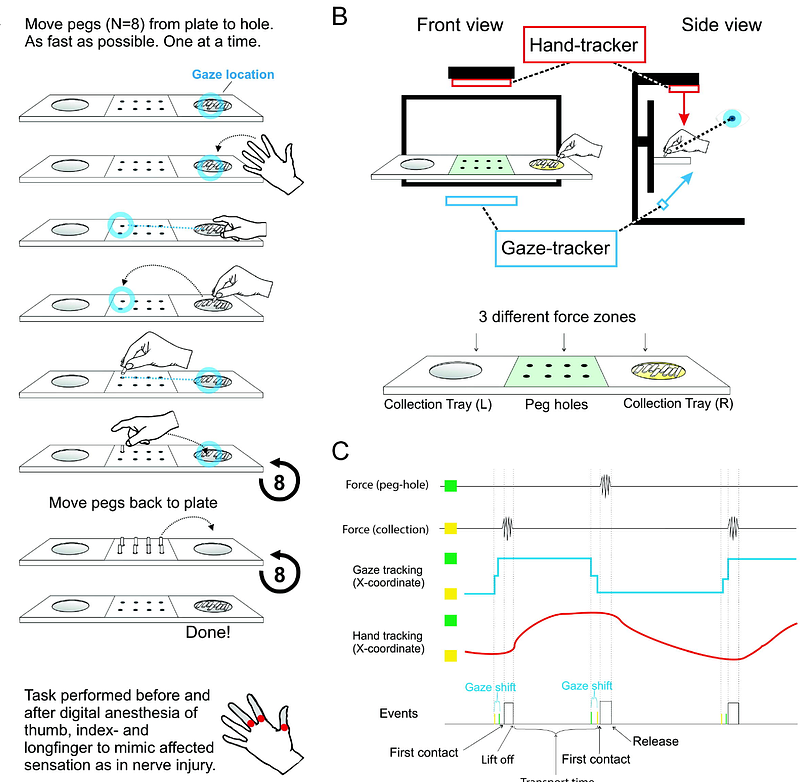Acute loss of fingertip sensation leads to general compensatory changes in eye-hand coordination

Acute loss of fingertip sensation leads to general compensatory changes in eye-hand coordination
Ung, K.; Yau, J.; Nordmark, P. F.
AbstractThe role of sensory feedback is well established in current models of motor control, evidenced by deficits in movement coordination resulting from impaired sensory function. When vision and touch are both available for object-oriented manual behaviors, these senses can be distinctly leveraged; vision guides movement planning while touch provides feedback on hand-object interactions. How eye-hand coordination changes with the loss of somatosensory feedback has not been well studied. Conceivably, vision is recruited to compensate for the feedback lost when touch is abolished. We tested healthy participants on a manual dexterity task, consisting of moving small metal pegs. The task was performed before and after administration of digital anesthesia that abolished cutaneous sensations while preserving motor function with the acting hand. During peg collection, transport, and placement epochs, we tracked gaze direction and hand positions while also recording forces applied to the pegboard. We hypothesized that the nervous system selectively adapts eye-hand coordination according to the dexterity demands of the task epochs. We found that participants maintained the ability to perform the pegboard task following the loss of cutaneous feedback, albeit with longer trial times and altered force profiles. Notably, somatosensory loss was accompanied by a shift in visual behavior marked by a closer alignment between gaze and hand positions during all task epochs, even those that did not involve object manipulation. Together, these data affirm the contributions of sensory feedback to force control in service of dexterous object manipulation and reveal the non-selective nature of compensatory eye-hand coordination processes.